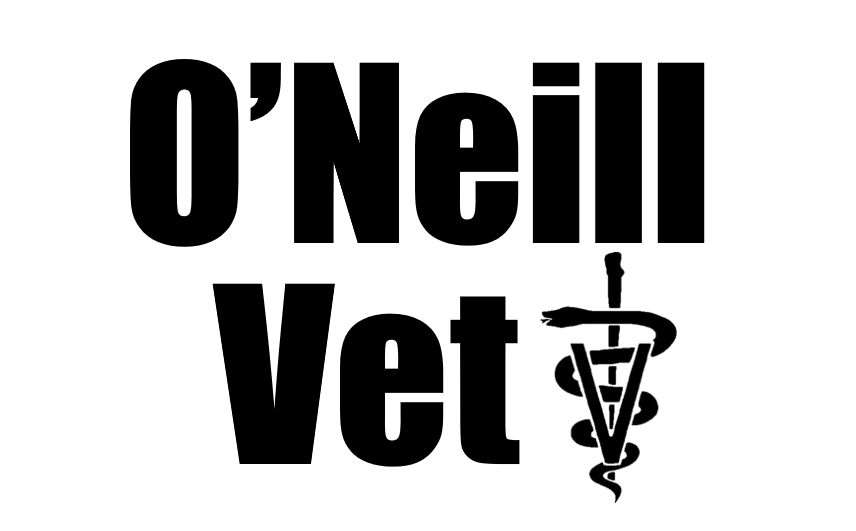
Feline Vaccinations
Core Vaccinations
These are vaccines which every cat should receive, regardless of exposure to other cats. They include distemper (panleukopenia), calicivirus, herpesvirus (rhinotracheitis), and rabies. The first 4 vaccinations listed are given together in a series of 3 shots as a kitten, whereas rabies is given once and boosted the next year.
-
All of these viruses generally cause severe upper respiratory tract and eye infections, weight loss, immunosuppression, even neurologic signs and death. These are combined in the feline “distemper” vaccine called “CVRC”. This vaccine is given as a series of three vaccinations as a kitten, then an adult booster is administered a year later.
-
This vaccination should also be given to every cat. Cats, especially farm cats, are at risk for being in contact with other rabid animals. If unprotected cats are bit by an infected animal, they will contract rabies from the saliva. Signs of rabies include sudden changes in behavior (usually aggressive), excessive drooling, and progressive paralysis. Primary vaccination begins at 12 weeks of age for kittens and then is boosted a year later. The rabies booster is given every 3 years as an adult.
Kitten Vaccinations
-
Deworm
CVRC
-
Deworm
CVRC
FeLV (Optional - If you choose to use this vaccine, your cat should be tested prior to vaccination)
-
Deworm
CVRC
Primary rabies
FeLV (Optional - If you choose to use this vaccine, your cat should be tested prior to vaccination)
-
Deworm
CVRC
Rabies
FeLV (Optional - If you choose to use this vaccine, your cat should be tested prior to vaccination)
-
Deworm (every 6 months)
CVRC
Rabies
FeLV yearly (Optional - If you choose to use this vaccine, your cat should be tested prior to vaccination)
Non-Core Vaccinations
These are vaccines which may or may not be necessary since the diseases they prevent occur sporadically or are more common in specific circumstances.
-
FeLV is a deadly virus that infects cats worldwide. It causes a variety of symptoms including cancers, anemia, and immunosuppression, leading to infections with other diseases. Early in the course of the disease, cats can have no symptoms for months to years, but can be infective to other cats. It cannot be transmitted to humans and has no relation to leukemias in humans. Cats pick up the virus from direct contact with another infected cat, usually through grooming, biting, or sharing food or water dishes. It can also be passed from a mother cat to her kittens.
The feline leukemia vaccine is recommended for cats and kittens who will go outdoors, potentially contacting other cats who may be infected. It is also recommended for cats in multiple-cat households where the introduction of new cats is common, and for cats living with an FeLV-infected cat. All cats should be tested for FeLV prior to vaccination, since the vaccine will not provide protection if your cat has already been exposed. All new cats should be tested prior to bringing them into your household. The vaccine is given as a series of 2 shots, 3-4 weeks apart, and then an annual booster.
-
We recommend testing any cat with an unknown history for FeLV and FIV (feline AIDS). Both viruses are contagious to other cats, and if we know that your cat is positive we can make recommendations for his/her health as well as recommendations to reduce the risk of infection to other cats around him/her. It can take 3-4 months from the time of exposure before the infection will be detected by the test, so in general, cats coming from unknown backgrounds should be tested prior to bringing them into a household. Kittens should be tested when they are over 6 months old.
Risks of Vaccination
Although it’s extremely rare, in general, vaccines may cause localized pain or swelling, low grade fever, allergic reactions such as swelling of lips and eyelids, and mild lethargy. With any vaccine, anaphylaxis may occur. In cats, this is generally seen as severe vomiting and diarrhea or wheezing, usually within half an hour of receiving the vaccine. If this occurs, let us know immediately. It is normal to feel a small lump where the vaccine was given, but it should disappear. Let us know if it is still there a month after vaccination.


